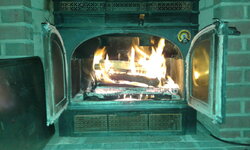"Afterburner"? Does your have a cat?
Mine just have channels that act as afterburners to run the hot exhaust through chambers that are closer to the warm air circulation channels, ideally burning off particulates, but it really restricts the air flow a lot. So I can only close the bypass (for direct exhaust) when the stove is a solid 500 F or higher.
I suspect you have a different stove if you have a real "afterburner".
Mine just have channels that act as afterburners to run the hot exhaust through chambers that are closer to the warm air circulation channels, ideally burning off particulates, but it really restricts the air flow a lot. So I can only close the bypass (for direct exhaust) when the stove is a solid 500 F or higher.
I suspect you have a different stove if you have a real "afterburner".



